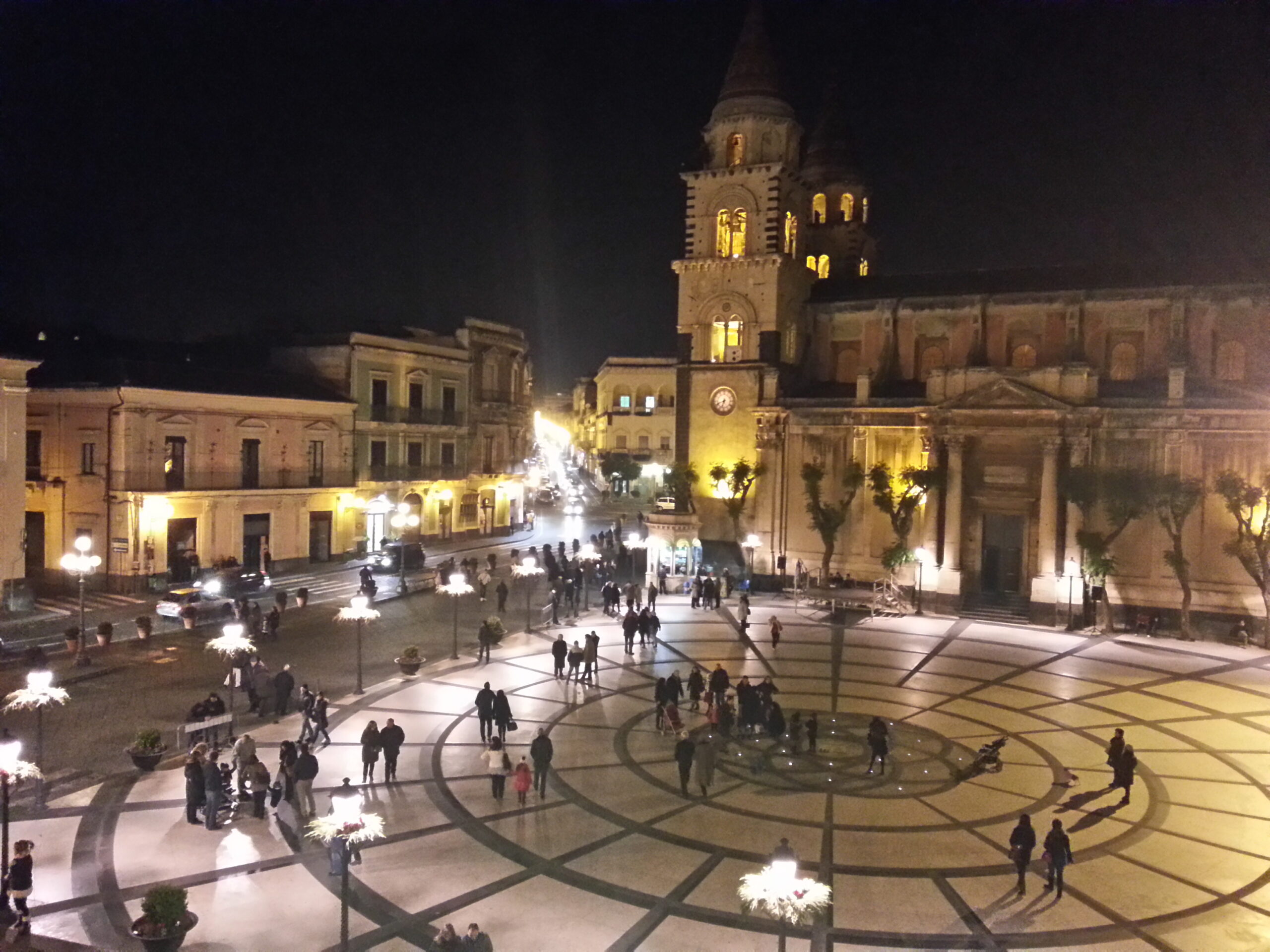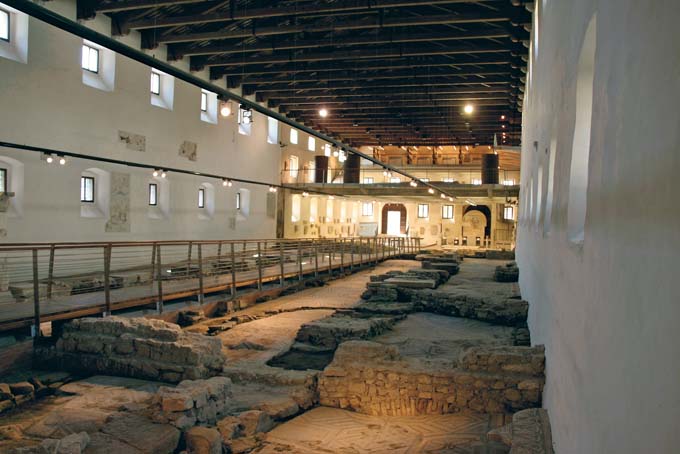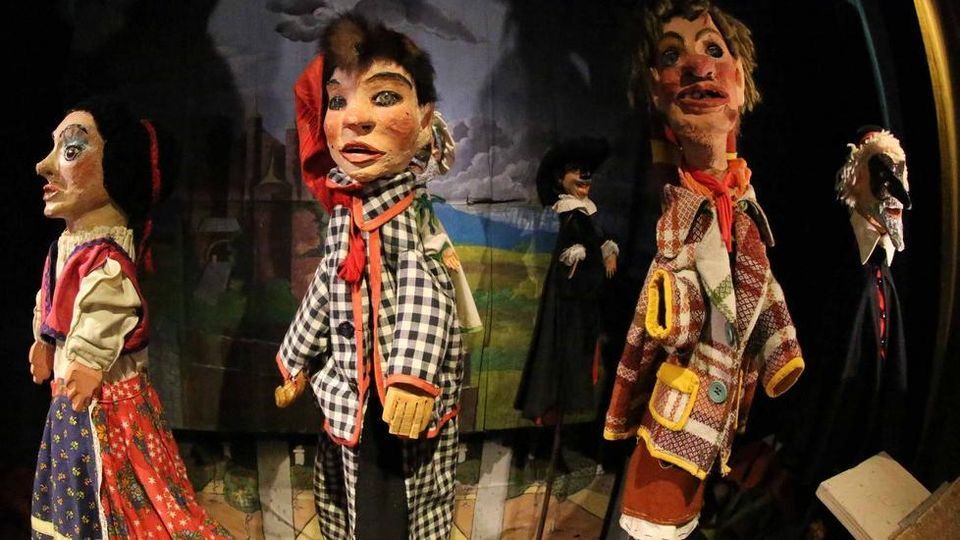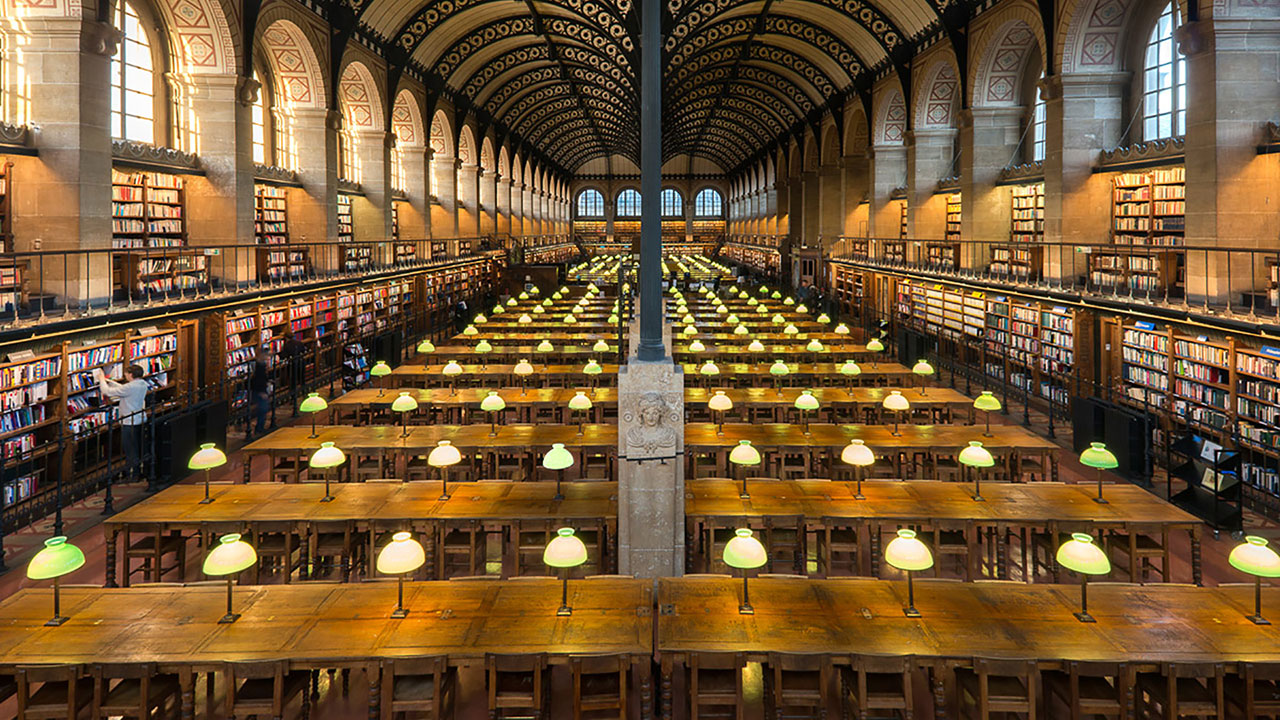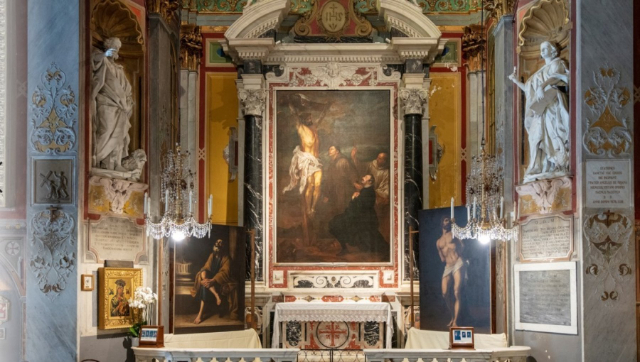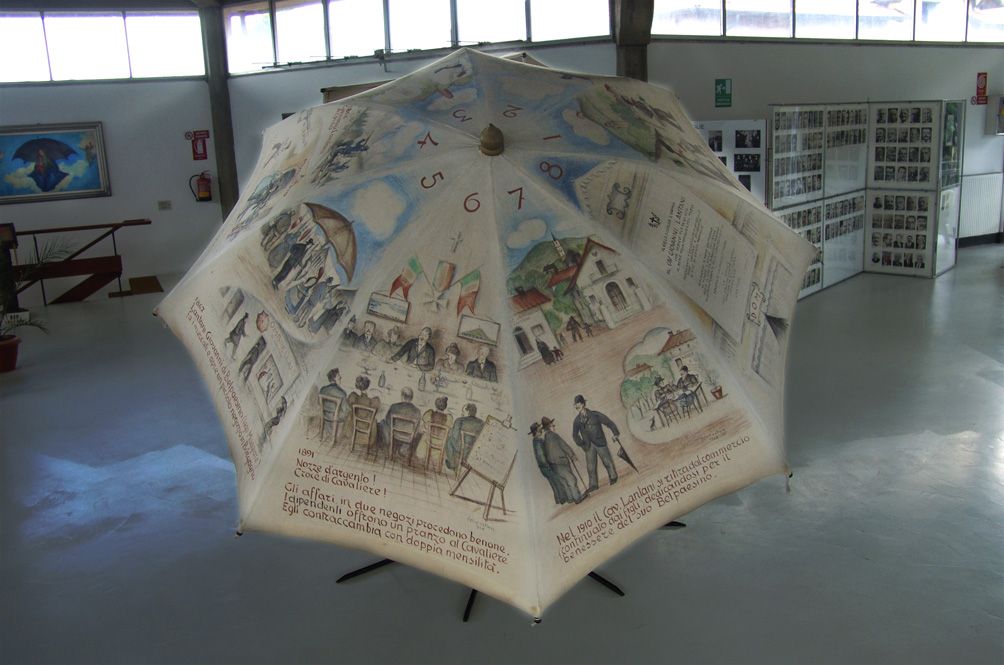The Square gathers architectural gems from the 17th and 12thXth centuries, enhanced by recent restorations.
The concrete pavement has been replaced with arabesques of lava stone alternating with the flare of white stone. Whimsical carved figures stand out in every corner of the square, and elegant wrought-iron railings emerge from the terraces of the City Palace. As soon as one reaches the square, another uncommon detail also stands out to the eye: the cathedral’s bell towers feature exterior decorative motifs created with polychrome ceramic tiles. Otherwise, one is immersed in a triumph of Gothic that dates back to the twilight of the 16th century.
There are four pivotal buildings in the square:
The Cathedral of Maria Santissima Annunziata, attributed to Santa Venera, the city’s patron saint. The history of this sacred building dates back to the 15th century, but it was extensively revised later. Inside it holds outstanding works bearing the signatures of Paolo Vasta, Giuseppe Sciuti, Vito D’Anna and many other great artists.
The Town Hall, what was once called the Loggia Giuratoria, now includes an exhibition of period military uniforms. It still has a very obvious 17th-century Baroque layout, although it was revised in the 18th century. Its salient features are the masks supporting the balconies.
The Basilica of Peter and Paul, erected in 1550 and profoundly revised in the seventeenth and eighteenth centuries, with the provision of a Baroque layout. In the 19th century the bell tower was implemented. It houses a statue of Christ at the Column, made by an unknown author and much revered by the inhabitants.
The former Eldorado Theater (Modò Palace), a building somewhat set back from the Cathedral Square. Masks, Baroque brackets, two balconies and the name "Teatro Eldorado" are the features that surface of the original building, used as a theater until the 1920s.
